I am trying to build a seq2seq model using LSTM in Keras. Currently working on the English to French pairs dataset-10k pairs(orig dataset has 147k pairs). After training is completed while trying to predict the output for the given input sequence model is predicting same output irrespective of the input seq. Also using separate embedding layer for both encoder and decoder. What I observe is the predicted words are nothing but the most frequent words in the dataset and they are displayed in the decreasing order of their frequency. eg: 'I know you', 'Can we go ?', 'snap out of it' -- for all these input seq the output is -- 'je suis en train' (same output for all three).
Can anyone help me what could be the reason why model is behaving like this. Am i missing something basic ?
I tried following with batchsize=32, epoch=50,maxinp=8, maxout=8, embeddingsize=100.
encoder_inputs = Input(shape=(None, GLOVE_EMBEDDING_SIZE), name='encoder_inputs')
encoder_lstm1 = LSTM(units=HIDDEN_UNITS, return_state=True, name="encoder_lstm1" , stateful=False, dropout=0.2)
encoder_outputs, encoder_state_h, encoder_state_c = encoder_lstm1(encoder_inputs)
encoder_states = [encoder_state_h, encoder_state_c]
decoder_inputs = Input(shape=(None, GLOVE_EMBEDDING_SIZE), name='decoder_inputs')
decoder_lstm = LSTM(units=HIDDEN_UNITS, return_sequences=True, return_state=True, stateful=False,
name='decoder_lstm', dropout=0.2)
decoder_outputs, _, _ = decoder_lstm(decoder_inputs, initial_state=encoder_states)
decoder_dense = Dense(self.num_decoder_tokens, activation='softmax', name='decoder_dense')
decoder_outputs = decoder_dense(decoder_outputs)
self.model = Model([encoder_inputs, decoder_inputs], decoder_outputs)
print(self.model.summary())
self.model.compile(optimizer='rmsprop', loss='categorical_crossentropy')
Xtrain, Xtest, Ytrain, Ytest = train_test_split(input_texts_word2em, self.target_texts, test_size=0.2, random_state=42)
train_gen = generate_batch(Xtrain, Ytrain, self)
test_gen = generate_batch(Xtest, Ytest, self)
train_num_batches = len(Xtrain) // BATCH_SIZE
test_num_batches = len(Xtest) // BATCH_SIZE
self.model.fit_generator(generator=train_gen, steps_per_epoch=train_num_batches,
epochs=NUM_EPOCHS,
verbose=1, validation_data=test_gen, validation_steps=test_num_batches ) #, callbacks=[checkpoint])
self.encoder_model = Model(encoder_inputs, encoder_states)
decoder_state_inputs = [Input(shape=(HIDDEN_UNITS,)), Input(shape=(HIDDEN_UNITS,))]
decoder_outputs, state_h, state_c = decoder_lstm(decoder_inputs, initial_state=decoder_state_inputs)
decoder_states = [state_h, state_c]
decoder_outputs = decoder_dense(decoder_outputs)
self.decoder_model = Model([decoder_inputs] + decoder_state_inputs, [decoder_outputs] + decoder_states)
Update:: I have run on 147k dataset with 5 epochs and the results vary for every input. Thanks for the help.
However now I am running same model with another dataset with input and output sequences containing average no of words as 170 and 100 respectively after cleaning (removing stopwords and stuff). This dataset has around 30k records and if i run even with 50 epochs, the results are same again for every test sentence. So what are my next options for me to try. I was expecting atleast different output for different inputs (even if it is wrong) but same output is adding more frustration whether the model is not learning properly. Any answers ??

